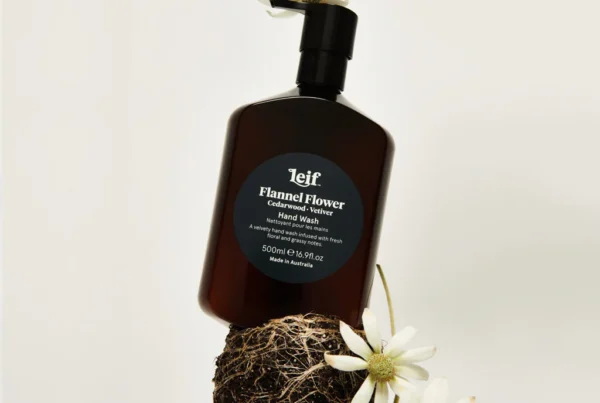There’s nothing wrong with a little retail therapy now and then, but have you ever given thought to how your shopping habits could be affecting the environment? As more and more consumers look to adapt their habits to become more eco-friendly, perhaps the best way to follow suit would be to focus on our buying habits and let go of extreme consumerism.
How do our compulsive shopping habits harm the planet?
Fills up landfills

Photo by Becca McHaffie on Unsplash
How often do you return something that you’ve bought? If you’re a compulsive buyer, then the answer is probably “often”.
Optoro is an American-based technology company that helps retailers process returns. According to them, Americans return about 3.5 billion products each year, and five billion pounds of returned goods ended up in US landfills.
If that’s not enough, the company added that landfill waste from returns alone contributes 15 million metric tons of carbon dioxide to the atmosphere.
Greenhouse emissions
According to citings from the UNEP and the Ellen MacArthur Foundation that were published by the World Bank, the fashion industry’s greenhouse gas emissions will surge more than 50% by 2030.
These levels are accelerated by our compulsive buying habits, coupled with the fast fashion industry that not only readily provides garments to appease our shopping habits, but readily does it at the expense of the environment.
What’s more, consumers regularly sending back items means that couriers need to collect and redistribute them, and all this extra transportation can also add to carbon emissions.
How can I curb my compulsive shopping?
Delamere is a Private Rehab Clinic and they have a few tips on how you can curb your compulsive shopping habits.
1. Avoid temptation
If you’ve found that certain online shopping apps are increasing the temptation to splurge, delete them from your phone, or other devices. When you remove the opportunity for one-click buying, you can limit the impulse to shop, all while saving money.
Online shopping may feel like a fun way to unwind in the evening or on your lunch break, so it’s important to cut out all temptation. You can do this by installing a blocker app on your computer or phone so that you can’t gain access to certain websites.
Or you can set a screentime limit on your phone so that you can’t access certain apps during your ‘trigger times’.
2. Set limits of your credit and debit cards
Used responsibly, credit cards have a whole host of benefits, including, earning users rewards, helping them build a credit history and for security. But when used recklessly, they can become a source of debt, stress, and temptation for those with a shopping addiction.

Photo by rupixen.com on Unsplash
Canceling credit cards will help you gain control over your shopping habits and limit any compulsive spending. Start by paying off any outstanding debt on your credit card. For some people, canceling credit cards is not an option, so alternatively, putting a spending limit on them.
3. Unsubscribe from emails
If you find that you are more tempted to spend money when you see sales emails pop up in your inbox, then it’s time to click on “unsubscribe”. Brands will often promise one-time offers enticing you to purchase more goods. Remove yourself from the mailing list, this will limit your exposure to “special offers” and cut back on your spending.
4. Replace shopping with a new hobby
Once you remove shopping from your day-to-day life, boredom might set in if you don’t have things to fill your time. It’s important to find healthy and fun activities to help stop you from slipping back into old habits and to have a distraction when you have the impulse to shop.
Baking, walking, painting, learning a new language or sport are just a few of the different ways you can try out a new hobby without breaking the bank.

Photo by Yannis Papanastasopoulos on Unsplash
5. Keep on track of your money
You may not be completely aware of how much money you’re actually spending and what is triggering your compulsive buying behavior. By keeping track of your outgoings you can find patterns in your spending. Identifying where these shopping triggers come from can help you to avoid certain situations where you would be motivated to shop.
You can download apps like Yolt or Plum to help you keep on track of your spending.

Photo by Damir Spanic on Unsplash
6. Set saving goals
Identify realistic goals you would like to achieve. Whether that’s taking a trip to your favorite city, donating more money to charity, or setting aside money for a new car, if you have a goal you want to accomplish, this will remind you how important it is to not be spending. Whenever you feel the urge to buy something, take a moment to think about your life goal.
7. Change your environment

Photo by Alexander Kovacs on Unsplash
Our environment plays a huge role in our behavior. If you want to curb your shopping addiction, pay attention to your current surroundings and see how they could be influencing your spending. While we don’t have full control over our environment, we do have some control over certain aspects of our lives, for example, the places that we visit.
Start by creating ‘no visiting zones’ for places you want to avoid, such as shopping centers, stores, and other settings that tempt you to shop.
You might also find temptation in reading magazines, newspapers, watching television shows, or scrolling on social media, so eliminating these from your environment is important to recovery.
8. Seek professional help
Opening up and asking for support from loved ones and professionals may feel challenging or unsafe due to the shame and social stigma associated with addiction. But having a strong support system around you can make the recovery process easier.
Professional support will help you identify the root cause of your problems. It will also identify any potential triggers, and help you develop coping mechanisms to help you or your family.






![women [longevity live]](https://longevitylive.com/wp-content/uploads/2020/01/photo-of-women-walking-down-the-street-1116984-100x100.jpg)









